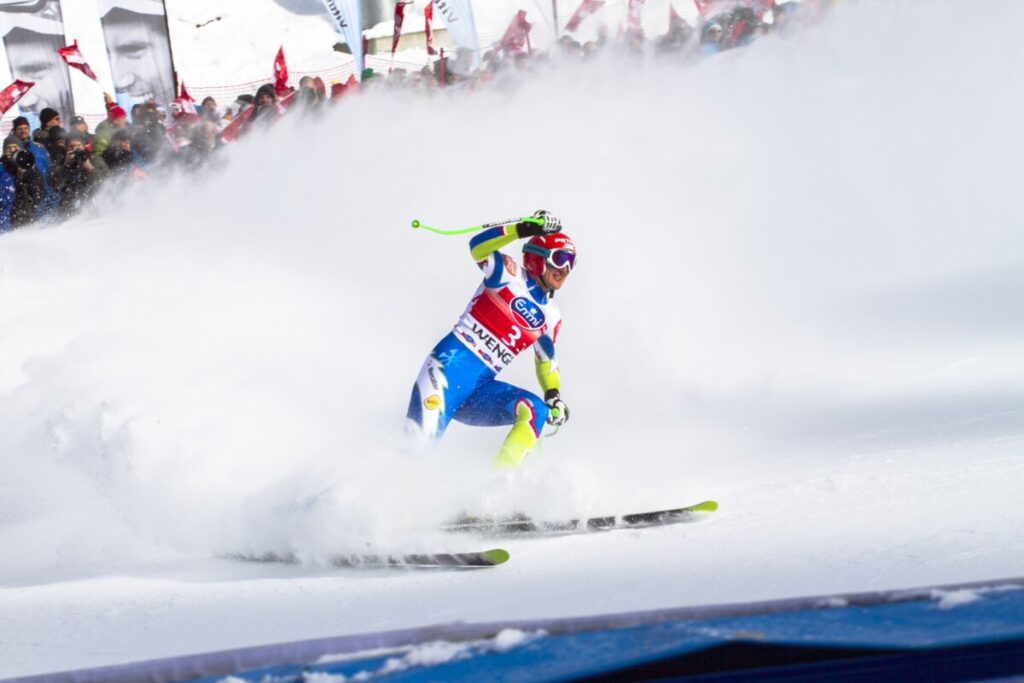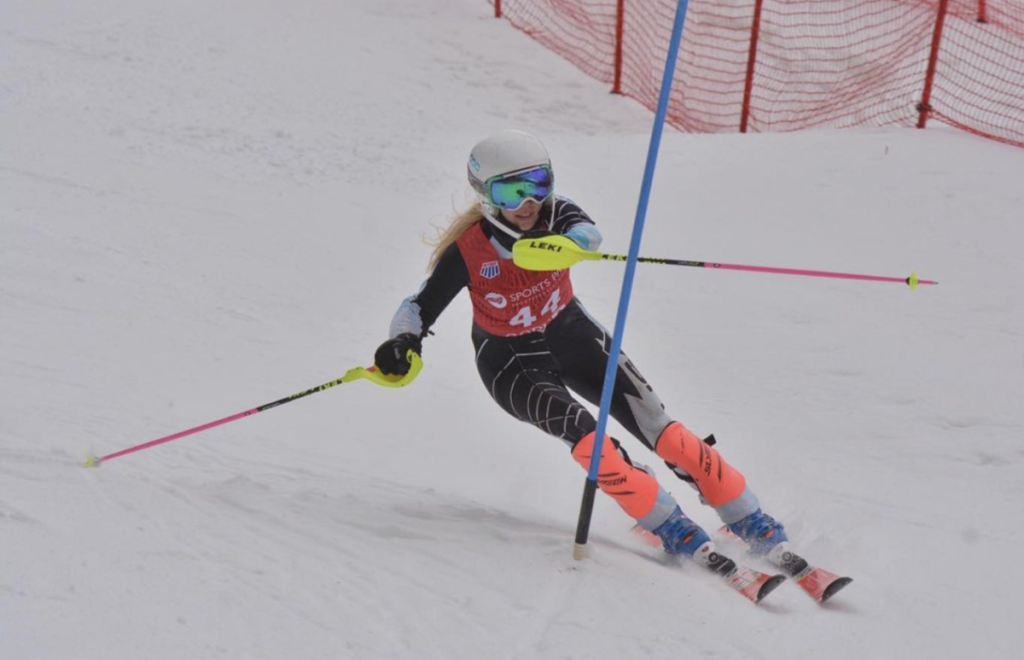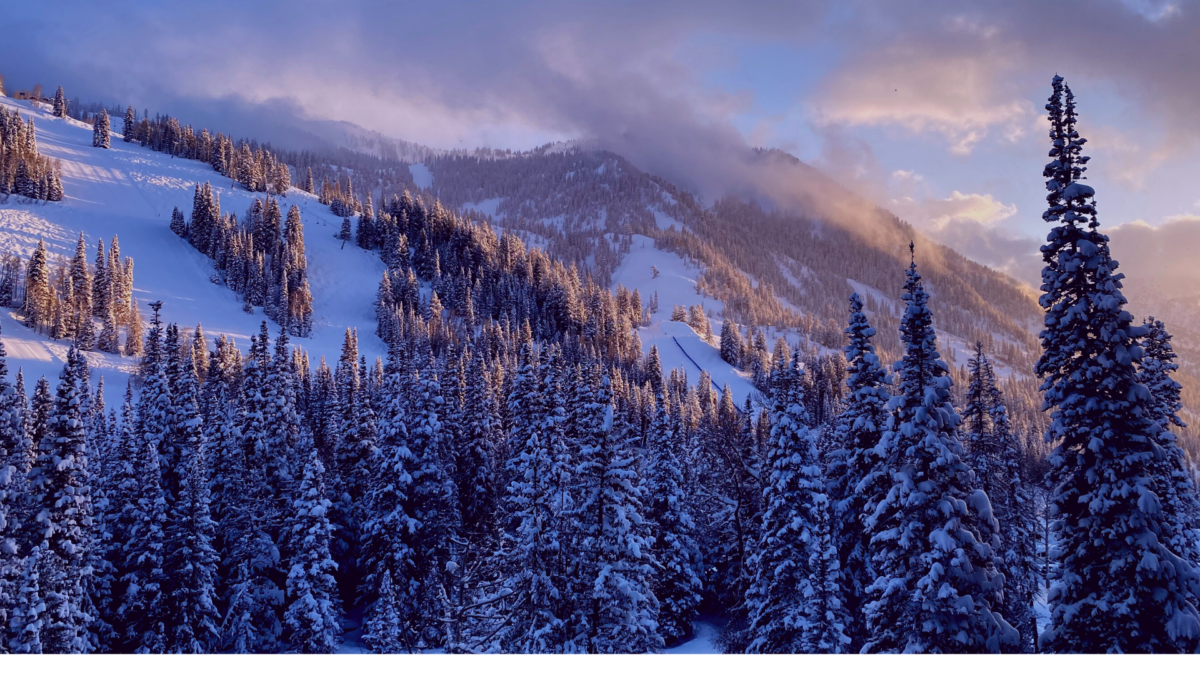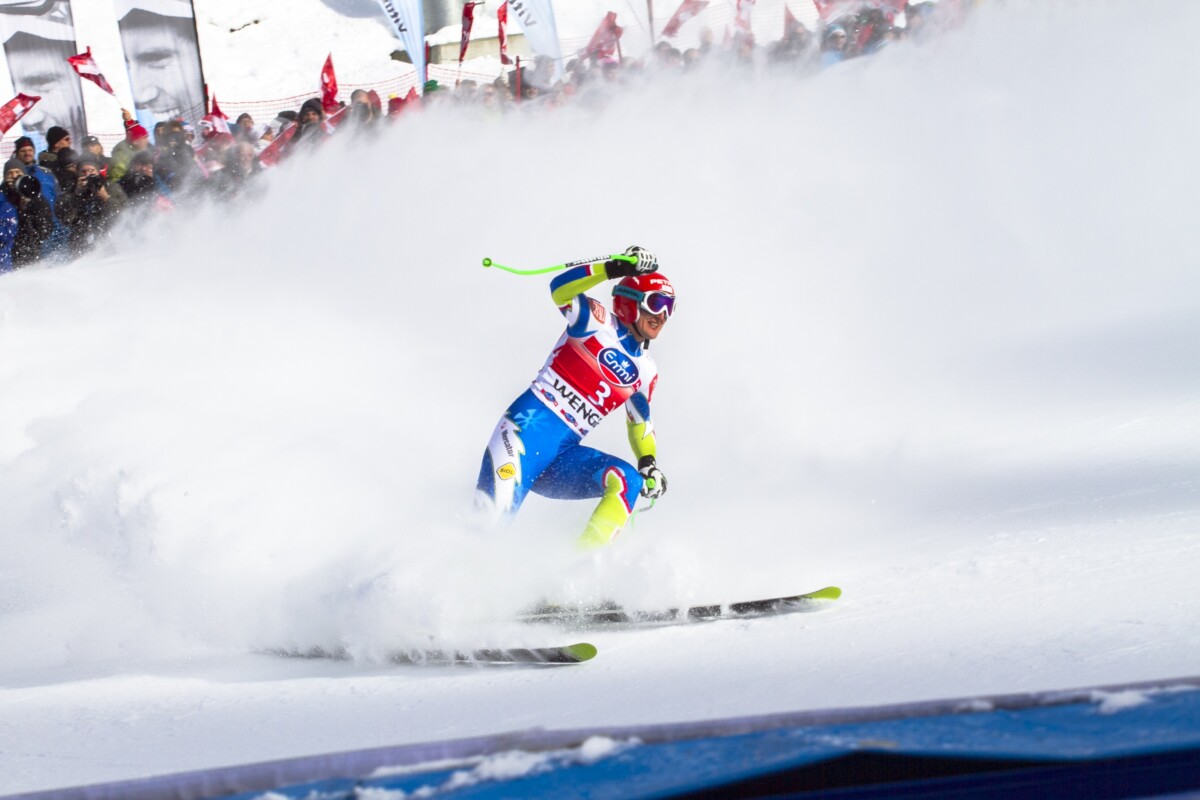Being named to the U.S. Olympic Alpine Team is arguably the ultimate goal for every young ski racer in the United States. But it’s a privilege that exceedingly few actually attain. The Winter Games occur every 4 years and fewer than 20 athletes make the roster each cycle. Studying the composition of these teams shows specifically which few are successful within the American ski racing world, and reveals the one characteristic that the overwhelming majority of these athletes all share: they come from the Western United States. In the last five Olympic Winter Games, there have been 57 athletes from the United States, and only 12 have been from the Northeast. This may not seem surprising – states like Colorado, Utah, and Wyoming have the biggest ski areas in the country, and therefore they would seem to have the conditions to foster success in ski racing. But a closer look at the careers of a few East Coast outliers shows other reasons for the disparity and for what propelled them to reach Olympic successes that rivaled their Western peers. Each of them was able to overcome the obstacles that make it more challenging for racers from the Northeast to reach the highest level of the sport.
A good place to start is with the story of Tricia Mangan. Mangan was born in Buffalo, New York, in 1997, and was raised alongside five siblings. She started skiing at the age of two with her twin brother, William. Mangan says her early years of racing were motivated by her desire to beat her brother and “be faster than the boys,” culminating in her qualifying for the 2012 U16 Nationals in Park City, Utah when she was 14. At the time, she didn’t realize “Nationals” was a ski race and showed up without her tuning equipment. She was also the only athlete that had just one pair of skis per race, and finished close to last place in every event. She cites this experience as being a motivating factor for placing higher the following year – especially after seeing Facebook photos of the girls who won the races and thereby qualified for the National Training Group. Through social media, Mangan watched them live, train, and race together all year in Park City, realizing how much harder she would have to work to “catch up” to them with the limited time she had on the snow in New York. As a student in a regular school, Mangan could not ski every day like they could but she did take “homeschool days” to train a few extra days a week at nearby Holimont mountain. Mangan qualified for U16 Nationals again the following year and returned to Park City. At the event, she triumphantly finished fourth in the giant slalom and second in slalom – accomplishing her goal of qualifying for the National Training Group. She credits that success to her “underdog mindset” and viewing her “perceived weakness” of having less time on the snow, no ski academy, and an “untraditional path” – as a differentiator rather than a disadvantage relative to her peers. Mangan went on to join the ranks of the U.S. Ski Team and the North-American Cup circuit. In 2015, she graduated high school and made the FIS Junior World Ski Championship Team, which she stayed on through 2018. Following a whirlwind 2017-18 season, Mangan was chosen as a last-minute addition to the U.S. Olympic Team after another racer was injured the night before the start of the 2018 Games. She flew straight from Switzerland to South Korea, racing in the giant slalom in Pyeongchang just eleven days after the Junior World Championships. She failed to finish the giant slalom, but went on to place 9th in the team event. After the 2018 season, Mangan’s skiing career reached a turning point. It was her last season as a U21 (under-21) “Junior” racer. Once a racer is no longer a Junior, the criteria for qualifying for the U.S. Ski Team get much harder to meet. She was cut from the U.S. Ski Team and went on to race independently for two years, forced to work harder than before to find sponsors and equipment and arrange training for herself. In 2021, she again rose to the pinnacle of the sport managing to rejoin the U.S. Olympic Alpine team for the Winter Games in Beijing where she placed 11th in the Alpine Combined.

Mangan’s ski racing career is notable not just because she’s among the few from the East Coast but also because she chose to focus on the speed events of super-g and downhill. East coast skiers typically have less experience in these disciplines. The mountains in the Northeast lack the vertical terrain necessary to train for speed events. As a result, unlike in the Western region, junior alpine racers cannot compete in downhill races because they do not exist. This is a key factor in why so few racers come from the Northeast – not only do they have less time on snow, as Mangan noted, but they cannot compete in one out of four main disciplines of ski racing – the downhill. The inability to gain experience in downhill racing is a major barrier that East coast racers face in reaching the highest level of ski racing.
It’s a factor evident in the historic career of the most famous American ski racer on the circuit today, Mikaela Schifrin. Shiffrin has served as a point of American pride in the last few Olympic Games leading up to the most recent games in Beijing. She has two Olympic gold medals, and is a four-time overall World Cup champion, a six-time winner of the World Cup slalom title, and a four-time world champion in slalom. At 18 she became the youngest slalom champion in the history of alpine skiing at the Olympics. She is tied for the most Olympic gold medals ever won by an American in alpine skiing, and one of just 5 Americans to have ever won the World Cup overall title. And if those facts weren’t enough to solidify her status, she is the first and only ski racer that has won in all six FIS Alpine Ski World Cup disciplines.
Shiffrin’s career is remarkable because, unlike her teammates who mostly hailed from mountains in Colorado and Wyoming, much of her youth was spent training in the Northeast. Shiffrin was born in Vail, Colorado to former ski racer parents that came from the East coast. She started skiing at age 2 and took advantage of Vail’s superior youth racing program, where Lindsey Vonn had trained as a teenager, and progressed in her training. But unlike Lindsey, who trained her whole youth in Colorado, when Shiffrin was 8 years old, she moved with her family to New Hampshire. She then skied at a tiny mountain called Storrs Hill for three years where her parents were volunteer coaches. She went from a 3,500-foot vertical drop at Vail to a 300-foot vertical drop at Storrs Hill, but paradoxically says the change helped rather than hurt her ski racing career. Shiffrin says the lack of a lift line or other distractions that come with larger mountains enabled her to focus more on her racing and to excel in the non-speed events like Slalom. She has also said that the transition from the reliable powder of the West to the unforgiving ice of the Northeast made her a more courageous skier and prepared her for the similar conditions on the European slopes of the World Cup.
Shiffrin credits her mastery of skiing well in icy conditions to the training and coaching she received as a student of Burke Mountain Academy. Founded in 1970, Burke is the oldest ski academy in North America. It was started by coach Warren Witherell after his student, Martha Coughlin, approached him wanting full-year training to achieve her dream of qualifying for the U.S. Ski Team. It provides year-round training to youth alpine ski racers on the nearby Burke Mountain Ski Area in Vermont. Shiffrin is one of a number of ski racing Olympians that are alumni of Burke. At the 2014 Olympics in Sochi, she was joined by 3 other former Burke students. So while the number of ski racers that make the U.S. Olympic team from the East Coast is far fewer than the number that make it from the West, a disproportionate number of the East Coasters are, like Shiffrin, alumni of Burke Mountain Academy. The year-round training they receive there – despite the lack of comparable terrain – is able to prepare them well for world class competition, meaning that the difference in conditions cannot solely account for the disparity in Olympic teams.
The last case study that bucks the trend of Western prowess in U.S. ski racing is the story of the Skiing Cochrans. The Skiing Cochrans are a multi-generational ski racing dynasty located in Vermont. Their legacy started in 1961 when Mickey and Ginny Cochran built their own ski area on their property in Vermont, where they trained their four children in ski racing. All four of their children went on to be named to the U.S. Olympic Alpine Team, with one of them, Barbara Ann Cochran, winning a gold medal at the 1972 Olympics in Sapporo, Japan, in slalom while competing alongside two of her siblings. Each of the four children went on to have their own children be named to the U.S. Ski Team. Bob Cochran’s son Jimmy Cochran competed at the 2006 and 2010 Olympics and Barbara Ann’s son Ryan Cochran-Siegle competed in the 2018 and 2022 Olympics. Ryan won a silver medal at the 2022 games, making him the only American to win a medal in Beijing this year. The success of the Cochrans has been attributed to Mickey Cochran’s coaching philosophy – using his engineering background to focus on the importance of choosing the fastest path down the hill. He was also among the first coaches to apply principles of sports psychology to ski racing. The Cochrans created a ski racing community and infrastructure in their home state of Vermont which propelled Olympic ski racing success over multiple generations.
That success is an outlier because the ski racing communities and infrastructure that are most robust remain in the Western regions. These factors are key to success because ski racing is a generational sport that requires the commitment of a whole family. Parents have to invest a great deal of their money, their time, and their effort. They also are restricted in where they can live or how much time they can spend with their children. Because the sport demands so much time on snow, athletes must be near a ski area during the winter months. This is the reason why so many high-level athletes in the sport have parents that were ski racers themselves, or at least high-level skiers. This foreshadows the true reason why so many of the athletes on the past five U.S. Olympic Alpine Teams have been from the West: the type of parents that give enough of their time, money, and effort to their children’s ski racing careers for them to qualify for the Olympics choose to live in the West because of the more robust skiing culture and infrastructure there. As mentioned above, the increased amount of snow and vertical height provided by the ski areas in the West compared to the East do not limit effective training to the West, but they do attract ski enthusiasts to live there full-time. And so the parents of ski racers that are willing to invest that much into their childrens’ ski racing careers often choose to settle down in places like Park City and Vail. Ultimately, the answer to the question of why there is an under-representation of Northeastern ski racers at the Olympics is simple: The communities that care enough about ski racing to produce these athletes choose to live in the West.

Bibliography
“Criteria.” U.S. Ski & Snowboard. Accessed May 10, 2022. https://usskiandsnowboard.org/sport-programs/criteria.
DeCouto, Brady S., Rhiannon L. Cowan, Bradley Fawver, Erich Müller, Lisa Steidl-Müller, Birgit Pötzelsberger, Christian Raschner, Keith R. Lohse, and A. Mark Williams. “Nationality and Sociocultural Factors Influence Athlete Development and Sport Outcomes: Perspectives from United States and Austrian Youth Alpine Ski Racing.” Journal of Sports Sciences 39, no. 10 (2020): 1153–1163.
Hellstedt, Jon C. “Sport Psychology at a Ski Academy: Teaching Mental Skills to Young Athletes.” The Sport Psychologist 1, no. 1 (1987): 56–68.
Lynn, Lisa, Evan, and Abagael Giles. “The Cochran Dynasty: A Family of Olympians.” VT SKI + RIDE. Last modified January 31, 2018. Accessed May 10, 2022. https://vtskiandride.com/cochran-dynasty/.
Mangan, Tricia. “A Little History and a Thank You.” A Little History and a Thank You – by Tricia Mangan. Updates from the road, September 21, 2021. Last modified September 21, 2021. Accessed May 10, 2022. https://triciamangan.substack.com/p/a-little-history-and-a-thank-you?s=r.
Merrill, Perry Henry. Vermont Skiing: A Brief History of of Sic Downhill & Cross Country Skiing. Montpelier, VT: P.H. Merrill, 1987.
Pennington, Bill. “Mikaela Shiffrin’s Swift, If Unplanned, Ascent to World Champion.” Accessed May 11, 2022. https://www.nytimes.com/2014/01/10/sports/mikaela-shiffrins-swift-if-unplanned-ascent-to-world-champion.html.
Pennington, Bill. “Short Hillside’s Long Legacy.” The New York Times. The New York Times, January 23, 2013. Last modified January 23, 2013. Accessed May 10, 2022. https://www.nytimes.com/2013/01/24/sports/skiing/at-cochrans-ski-area-a-long-legacy-of-family-success-and-fun-for-all.html.
Pennington, Bill. “World Cup Skier Works at Being 17.” The New York Times. The New York Times, January 14, 2013. Last modified January 14, 2013. Accessed May 10, 2022. https://www.nytimes.com/2013/01/15/sports/mikaela-shiffrin-a-top-ski-racer-at-age-17.html.
Reid, Duncan. Skiing the New Way: Easier to Learn. Lincoln, NE: Writer’s Showcase/IUniverse, 2004.
Steidl-Müller, Lisa, Carolin Hildebrandt, Christian Raschner, and Erich Müller. “Challenges of Talent Development in Alpine Ski Racing: A Narrative Review.” Journal of Sports Sciences 37, no. 6 (2019): 601–612.
“The Story of Burke Mountain Academy’s Land and Buildings: 1970-2000.” Burke Mountain Academy. Accessed May 10, 2022. https://www.burkemtnacademy.org/p5532.
“These Are the U.S. Ski Academies Grooming Future Olympians.” Ski Mag. Last modified April 1, 2021. Accessed May 10, 2022. https://www.skimag.com/performance/competitions-and-events/racing/best-ski-academies-us/.
Vinton, Nathaniel. Fall Line: America’s Rise to Ski Racing’s Summit. New York: W W Norton, 2016.Witherell, Warren. How the Racers Ski. New York: Norton, 1988.
Special thanks to Professor Miller for all of her help.

